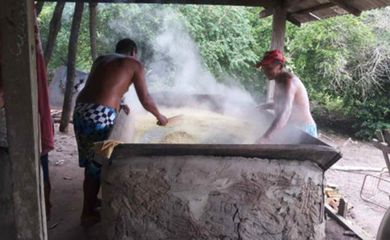Brazil has 7.6 thousand quilombola communities

Quilombola communities in Brazil totaled 7,666 in 8,441 locations across 25 states, comprising some 1.3 million people. The data can be found in a new supplement to the 2022 Census, released Friday (Jul. 19) by statistics bureau IBGE.

The institute explains that some of the communities have members in more than one location. This justifies the fact that there are 775 more locations than communities.
According to IBGE Manager for Traditional Territories and Protected Areas Fernando Damasco, community membership is linked to “ethnic, historical, and social issues.”
“A location is a place where people gather. The community, on the other hand, expresses the ethnic and community bond that goes beyond spatial location,” he explained.
The specialist explains that one of the reasons why communities are represented in more than one geographical space is because of their history of resistance to racism and violence. “In fact, in many situations these communities were forced to disperse,” he noted.
The 2022 Census is the first in which census-takers have collected specific information on quilombolas—descendants of groups that resisted slavery in the colonial period. To classify a person as a quilombola, IBGE took into account the self-identification of those questioned, regardless of their stated skin color.
The locations were classified by the institute as “places in the national territory where there is a permanent settlement of quilombola people which are linked to a quilombola community and have at least 15 people declared quilombolas whose homes are no more than 200 meters away from each other.”
Location
Geographical observation reveals that most locations are in the Northeast—5,386, or 63.81 percent of the total. Maranhão is the state with the most quilombola locations—2,025, or 23.99 percent of Brazil’s total—followed by Bahia, with 1,814. Despite being second in the ranking, Bahia has the largest quilombola population, 397 thousand. Only 15 percent of the localities (1,200) are in territories officially recognized by the government.


